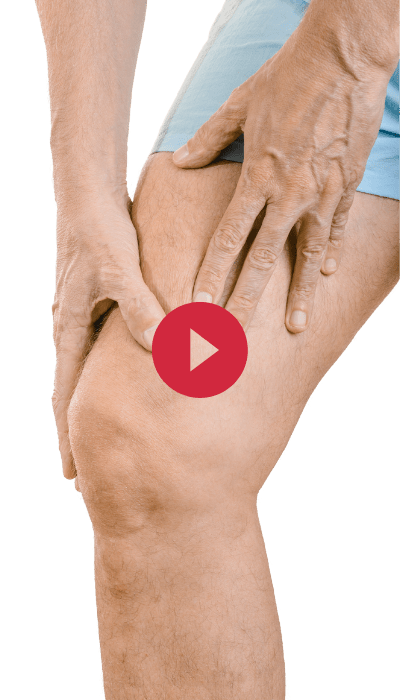Activity Modification and Knee Strengthening for Osgood-Schlatter Disease

Introduction
Osgood-Schlatter disease is a condition that occurs in about 1 in 10 active adolescents and presents as anterior knee pain, aggravated by the loading of the knee. The pain is typically present upon palpation of the tibial tuberosity and may be accompanied by signs of swelling. It is often recognized as a long-term condition and may in some cases be tough to handle. Typically, management of Osgood-Schlatter disease consists of passive approaches where rest and avoidance of painful activities take the lead. In this study, an active approach was favorited and included an activity modification together with knee strengthening for Osgood-Schlatter.
Methods
A prospective cohort study was conducted and included 51 adolescents with a mean age of 12.7 years, suffering from Osgood-Schlatter. They were active individuals, as reflected by 92% of them meeting the minimal physical activity recommendations per day. More than one-third of the participants had been treated previously for their knee pain, yet unsuccessfully. They had a mean duration of their complaints of 21 ± 12.5 months.
The primary outcome of interest was the self-reported improvement in Osgood-Schlatter symptoms at 12 weeks, measured on a 7-point scale, ranging from much worse to much improved. A successful outcome was defined as having improved or having much improved. Other outcomes included the KOOS scale, the highest degree of pain during the past week measured by a numeric rating scale, and the EuroQol–5 Dimensions. Two performance tests were performed as well: the single-leg vertical and horizontal jumps.
Physical activity throughout the course of the study was objectively measured to see whether the activity modification was followed. These measurements were taken using an Actigraph which classifies the time spent in activities, with different intensities such as sedentary, moderate, and vigorous physical activity. Finally, measurements of isometric hip abduction and knee extension strength were collected using a handheld dynamometer.
They underwent a 12-week intervention focussing on activity modification and gradual re-exposure to increasing knee joint loads. This program consisted of a reduction in sports participation and avoidance of pain-aggravating activities in the first 4 weeks after which a slow return guided by the activity ladder is initiated. This activity ladder consists of 11 levels and the participants could enter the next level when they had no or maximum 2/10 pain during or the morning after the activity. Worsening symptoms required to take a step back on the ladder. A requirement was that next to performing the activities of the activity ladder, certain strengthening exercises were performed accordingly. These exercises included bridging, static knee extension holds for 3 sets of 10 repetitions in weeks 1-4. From week 5 onwards, these were supplemented with wall squats, squats, and lunges, each with progressions and regressions.

Only when level 8 of the activity ladder was reached, a return to sports was possible, again when no pain (max 2/10) during the activity or the morning after was felt. When a two-week period of unrestricted training with no pain was achieved, the athlete could be reintroduced to competition.

Results
After twelve weeks of following the activity modification protocol and gradual re-exposure to loads, 80% reported a successful outcome. After one year of performing knee strengthening for Osgood-Schlatter, this increased to 90%.

The secondary outcomes revealed that the highest degree of pain during the past week decreased from a median score of 7/10 at baseline to 2/10 at 12 weeks. Other secondary measures showed improvements in symptoms and functioning as well. The results were further supported by an increase in knee strength of 30%.
Questions and thoughts
Osgood-Schlatter disease affects 10 percent of sporting adolescents – myself included when I was about that age. I still remember my knee hurting and having to restrain myself from sporting activities and gym classes at school. I didn’t quite understand why my knee felt like that and therefore applaud that in this study, both parents and the adolescent were educated on this condition.

According to Guldhammer et al. who did a retrospective study in 2019, 60% of those diagnosed with Osgood-Schlatter disease at an orthopedic department still report pain at a median of 4 years follow-up within a 6-year period. This characterizes the longstanding nature of the condition. In this study, 69% returned to their sporting activities, but this was only slightly higher than at 6 months (67%). Also, one in four athletes was lost to follow-up, which is an important bout of information that is missing from the analysis.
The secondary outcomes revealed positive improvements in knee extension strength (32%) and hip abduction strength (24%) and increases in single-leg horizontal jumps (14%) and vertical jumps (19%).
Talk nerdy to me
A strong plus of this study is the fact that it used an objective measure to quantify the extent of activity modification. Rather than the “easy method” to ask patients whether or not they reduced their activities (which can be biased), this study used actigraphs for at least 1 week. The initial assessment was performed by physiotherapists, and rather than routinely using medical imaging, no radiographs were taken at the baseline evaluation. This reflects clinical practice pretty accurately.
Take home messages
Knee strengthening for Osgood-Schlatter was able to improve pain scores after 12 weeks. This strengthening program was combined with a temporary modification in activities. The authors also conducted a study in 2019 using the same activity modification in patellofemoral pain. If you’re keen on learning more about this, have a look at our review here
Learn more
Reference
THE ROLE OF THE VMO & QUADS IN PFP
Watch this FREE 2-PART VIDEO LECTURE by knee pain expert Claire Robertson who dissects the literature on the topic and how it impacts clinical practice.



